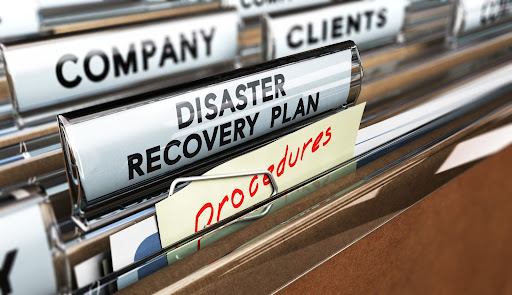A disaster recovery plan, disaster recovery implementation plan, or IT disaster recovery plan is a policy or process designed to assist an organization in executing recovery processes after a disaster to protect business IT infrastructure and promote recovery across the board. The purpose of a disaster recovery plan is to outline the consistent actions that must be taken before, during, and after a disaster — whether natural or man-made — so the entire team can take action. A dependable disaster recovery plan should address disasters that are intentional, such as hacking, or accidental, such as equipment failure.
Creating an Effective Disaster Recoverment Plan: Steps to Follow
While these may vary based on the organization, the basic steps to a disaster recovery plan include:
Business Impact Analysis, RPO, and RTO
Conduct a Business Impact Analysis (BIA) to determine your most crucial systems and processes and the effect of their malfunction. A BIA determines functions or activities in your organization that are considered essential — and those that aren’t.
Critical functions include business activity that is mandated by law, fulfills a financial obligation, ensures cash flow, safeguards an irreplaceable asset, or plays a crucial role in maintaining market share. Once essential business processes have been identified, you will assign the following metric to calculate your organization’s level of tolerance for loss and the target time you set for recovery post-disaster.
- Recovery Point Objective (RPO) is focused on your company’s loss tolerance in relation to your data. RPO is determined by assessing the time between data backups and the amount of data that could be lost in between.
- Recovery Time Objective (RTO) is the target time for the recovery of your IT and business activities after a disaster. The goal of this is to calculate how quickly you must recover, which dictates the type of preparations you need to implement and the budget that should be allocated toward business continuity.
Risk Assessment
This step identifies potential hazards and high-value assets, such as customer information and other sensitive data, and how they align with business functions. As you’re creating a disaster recovery plan, and as a component of the risk assessment, you must be able to answer the following questions:
- What types of man-made or natural disasters or hazards could cause business disruption?
- How could these disasters impact the IT functions the business depends on to operate?
Establish Priorities
Your recovery efforts will only be as good as your answers to the following:
- What is essential for productivity
- If disaster strikes, what applications and infrastructure must be restored immediately?
At this stage, you can divide your applications into different levels:
- Level 1 should include mission-critical applications you need immediately
- Level 2 covers those you need within 12-24 hours
- Level 3 includes applications that can wait to be restored for a number of days
Do not fail to consider the needs of those who will be carrying out your disaster recovery plan; individuals who will usually be under an incredible amount of stress. Establishing an emergency chain of command communication ensures everyone is in the loop.
Partner With the Right Experts to Help Your Business Operations
Managing disaster recovery requires significant investment in capital, time, and expertise. Many companies choose an experienced partner to help protect their systems against disasters; a vendor can bring expertise and a programmatic approach to the table to ensure your disaster recovery solutions meet your business’s needs and IT capabilities.
Contact ZipBridge for Critical Emergency Response Solutions
Our team understands the importance of having a reliable disaster recovery plan in place, but know that when the unexpected strikes, contact and communication with your team is paramount. When every second counts, you must have a solution that delivers on connection every time. For more information about instant outbound emergency conference calling or frequently asked questions, contact us today!


